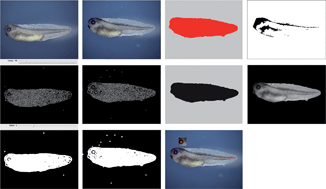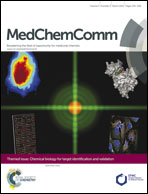Comparative mode-of-action analysis following manual and automated phenotype detection in Xenopus laevis†
Abstract
Given the increasing utilization of phenotypic screens in drug discovery also the subsequent mechanism-of-action analysis gains increased attention. Such analyses frequently use in silico methods, which have become significantly more popular in recent years. However, identifying phenotype-specific mechanisms of action depends heavily on suitable phenotype identification in the first place, many of which rely on human input and are therefore inconsistent. In this work, we aimed at analysing the impact that human phenotype classification has on subsequent in silico mechanism-of-action analysis. To this end, an image analysis application was implemented for the rapid identification of seven high-level phenotypes in Xenopus laevis tadpoles treated with compounds from the National Cancer Institute Diversity Set II. It was found that manual and automated phenotype classifications were in agreement with some of the phenotypes (e.g. 73.9% agreement observed for general morphology abnormality), while this was not the case in others (e.g. melanophore migration with 37.6% agreement between both annotations). Based on both annotations, protein targets of active compounds were predicted in silico, and decision trees were generated to understand mechanisms-of-action behind every phenotype while also taking polypharmacology (combinations of targets) into account. It was found that the automated phenotype categorisation greatly increased the accuracy of the results of the mechanism-of-action model, where it improved the classification accuracy by 9.4%, as well as reducing the tree size by eight nodes and the number of leaves and the depth by three levels. Overall we conclude that consistent phenotype annotations seem to be generally crucial for successful subsequent mechanism-of-action analysis, and this is what we have shown here in Xenopus laevis screens in combination with in silico mechanism-of-action analysis.


 Please wait while we load your content...
Please wait while we load your content...